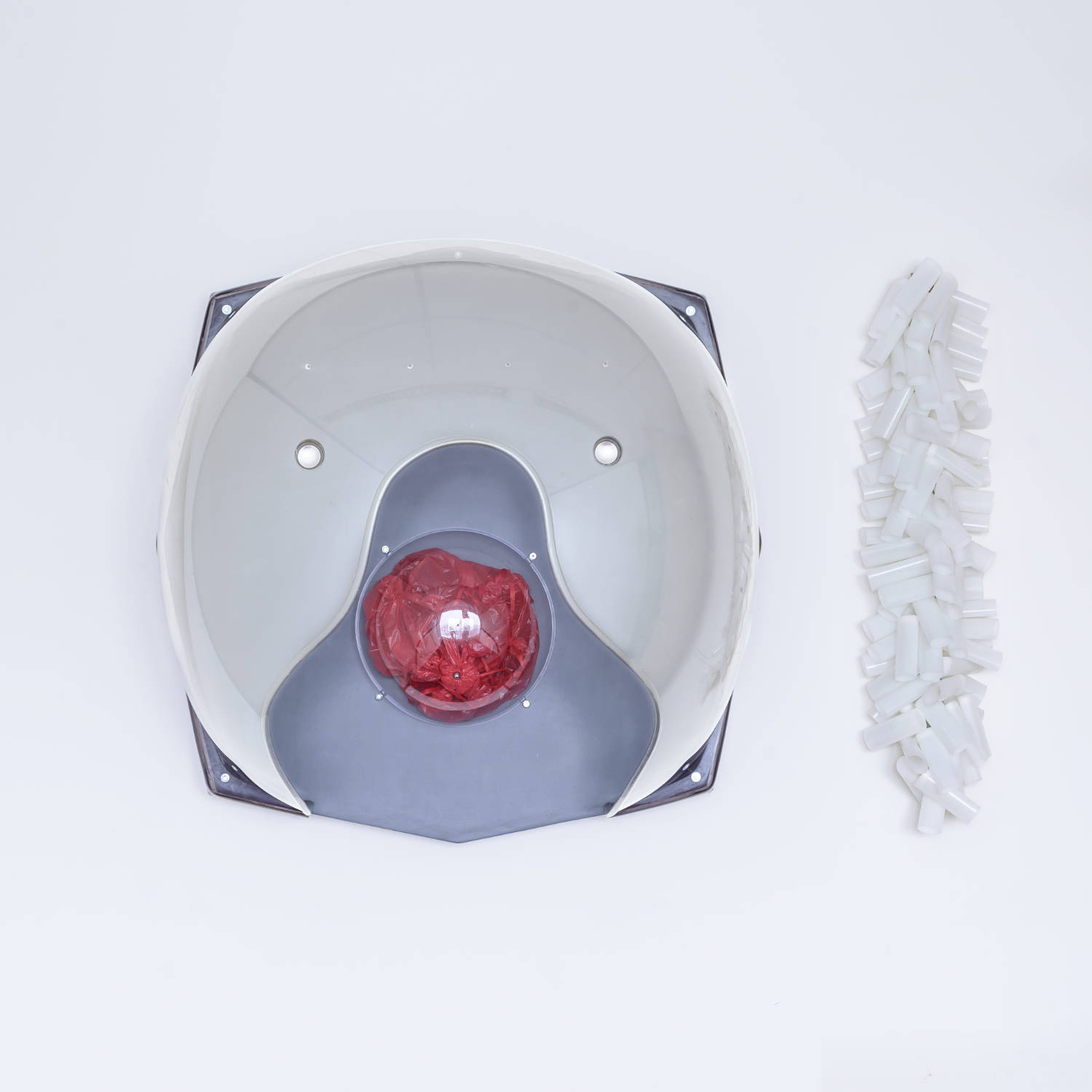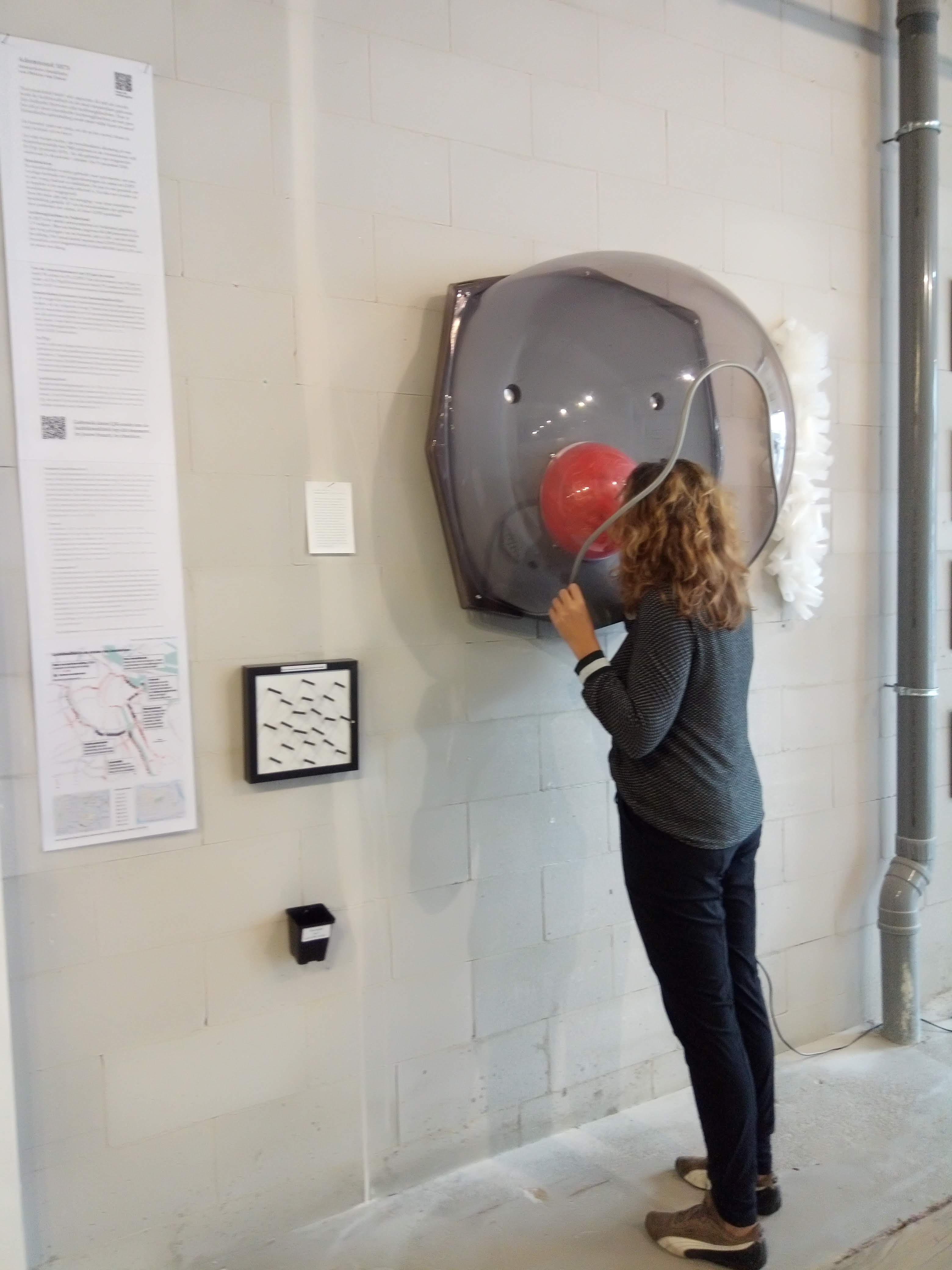Shortness of breath 1073
I have chosen to focus on sustainability from the perspective of air quality in our cities as it is a broad topic. One important indicator of air quality is the prevalence of breathing problems. Imagine not being able to experience true silence due to chronic respiratory and breathing issues. The visitor grabs a straw, blows the red airbag full, and listens. Moments later, this is heard through the loudspeakers.
The white tubes on the right are mouthpieces (flow transducers) from a general practice in Amsterdam's De Pijp district (postcode 1073). They were used to perform lung tests from October to December 2018.
This work was created for the SustainAbility Art Project, an initiative of artist members of AmstellandKunst and Pulchri Studio, curated by Saskia Gras.
to read more about air quality, click here
Mouthpieces
The mouthpieces are used during spirometry tests, which are a simple method for diagnosing lung diseases such as asthma and COPD at an early stage. The test is also utilized to gauge the effectiveness of the medication being used.
The mouthpieces are discarded after each test. The 88 pieces I used in this installation (after being thoroughly cleaned) came from a GP practice in De Pijp which has 7,000 patients in its register. 47 of the mouthpieces were used by asthma patients, while the remaining 41 were from COPD patients.
 Respiratory problems in the Netherlands
Respiratory problems in the Netherlands
In 2017, an estimated 1.75 million people in the Netherlands had asthma. Approximately 641,000 of these individuals sought medical care from a doctor, which accounts for 3.8% of the total population. Additionally, nearly 600,000 people, or 3.5% of the population, suffered from COPD (chronic bronchitis and/or emphysema).
Of Amsterdam residents aged 19 and over, 5% suffer from asthma and 3% from COPD. In De Pijp/Rivierenbuurt, 7% suffer from asthma and 3% from COPD among residents aged 19 and over. (Source: Amsterdam Health Monitor 2016, GGD Amsterdam)
Amsterdam primary school children
The questionnaire for primary school parents included a question about whether their child was currently experiencing any physical or health issues. One of the answer options listed specific problems related to breathing, coughing, shortness of breath, and throat or nose issues. In Amsterdam, 7.3% of children aged 5 to 10 have one or more of these problems, while in the De Pijp area, the percentage is higher at 11.7%. (Source: GGD Amsterdam)
 De Pijp
De Pijp
De Pijp is a neighborhood with long streets that was built at the turn of the 19th century mainly to house the working class, using very affordable building materials. Today, it is a popular multicultural neighborhood with 35,345 residents. Almost half of the residents are men and women aged between 25 and 45. The number of single-person households is very high, at 64%.
Air quality
The main traffic arteries in De Pijp are Ceintuurbaan and Stadhouderskade running from east to west, and Ferdinand Bolstraat, Van Woustraat, and Amsteldijk running from north to south. The map below indicates that Stadhouderskade is one of the most polluted streets in Amsterdam.
Check the current air quality in your neighborhood
or install the app AirCare by EarthCare
Monitoring air quality
The City of Amsterdam uses the Amsterdam Municipal Health Service's air quality monitoring system to keep track of the city's air quality. This system includes 12 measuring stations that operate 24 hours a day, 365 days a year. One of the stations, located on Stadhouderskade, recorded a level of 42.4 micrograms of nitrogen dioxide per m3. According to the regulations of the World Health Organization (WHO) and the European Union (EU), this value should not exceed 40 micrograms per m3. Additionally, there is a national monitoring system maintained by the RIVM (National Institute for Public Health and the Environment).
 Trends
Trends
In October 2019, the RIVM stated that it anticipated:
- a 7% increase in the absolute number of people with asthma (6% for men and 8% for women)
- and a 36% increase in the absolute number of people with COPD (44% for men and 28% for women)


